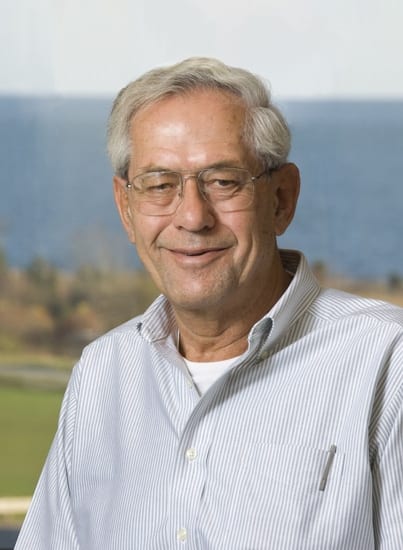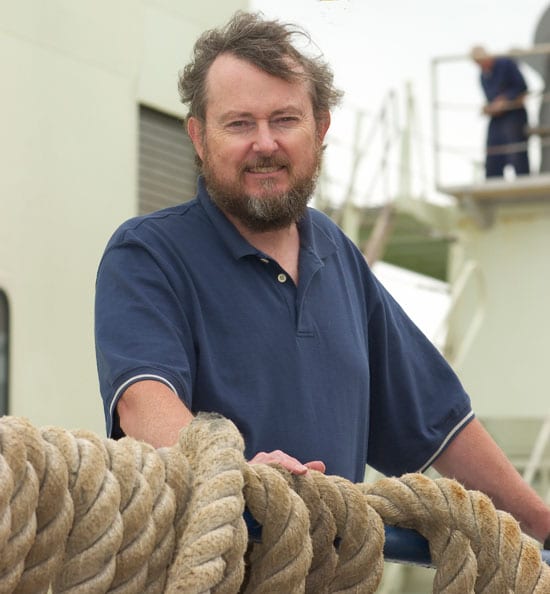News Releases
In CO2-rich Environment, Some Ocean Dwellers Increase Shell Production
In a striking finding that raises new questions about carbon dioxide?s (CO2) impact on marine life, Woods Hole Oceanographic Institution (WHOI) scientists report that some shell-building creatures?such as crabs, shrimp and lobsters?unexpectedly build more shell when exposed to ocean acidification caused by elevated levels of atmospheric carbon dioxide (CO2).
Read MoreCO2 Emissions Continue Significant Climb
The annual rate of increase in carbon dioxide emissions from fossil fuels has more than tripled in this decade, compared to the 1990s, reports an international consortium of scientists, who paint a bleak picture of the Earth?s future unless ?CO2 emissions [are] drastically reduced.?
Read MoreWHOI’s Bruce A. Warren Is Awarded Sverdrup Gold Medal
Bruce A. Warren?one of the world?s pre-eminent researchers of deep ocean currents and scientist emeritus at the Woods Hole Oceanographic Institution (WHOI)?is the 2010 winner of the prestigious Sverdrup Gold Medal, awarded by the American Meteorological Society (AMS).
Read MoreNew Tsunami Education Web Site Developed by Oceanographers
Scientists and Web developers at the Woods Hole Oceanographic Institution (WHOI) have created a new educational Web site with crucial tips on how to prepare for and survive a tsunami.…
Read MoreSEA to conduct expedition dedicated to measuring plastic marine debris in the North Atlantic Ocean
(Woods Hole, Mass.) — Sea Education Association (SEA) is preparing to conduct the first-ever research expedition dedicated solely to examining the accumulation of plastic marine debris in the North Atlantic…
Read MoreNewly Discovered Fat Molecule: An Undersea Killer with an Upside
A chemical culprit responsible for the rapid, mysterious death of phytoplankton in the North Atlantic Ocean has been found by collaborating scientists at Rutgers University and the Woods Hole Oceanographic…
Read MoreMystery Solved: Marine Microbe Is Source of Rare Nutrient
A new study of microscopic marine microbes, called phytoplankton, by researchers at Woods Hole Oceanographic Institution (WHOI) and the University of South Carolina has solved a ten-year-old mystery about the…
Read MoreClimate Change Meets Ocean Life in New Northeast Research Institute
Federal and academic marine scientists in the Northeast have combined resources in a new effort to understand how the large marine ecosystem off the northeastern U.S. functions. “I am very…
Read MoreWHOI Will Host Public Forum on Sea Level Rise
sea level rise, Morss Colloquium, polar ice cap, Woods Hole Oceanographic Institution
Read MoreWoods Hole Oceanographic Institution Will Lead Coastal and Global Observatories Effort
A Cooperative Agreement signed today by the National Science Foundation (NSF) and the Consortium for Ocean Leadership (OL) gives Woods Hole Oceanographic Institution (WHOI) and its partners approval to begin…
Read MoreNew Temperature Reconstruction from Indo-Pacific Warm Pool
A new 2,000-year-long reconstruction of sea surface temperatures (SST) from the Indo-Pacific warm pool (IPWP) suggests that temperatures in the region may have been as warm during the Medieval Warm…
Read MoreWoods Hole Oceanographic Institution Appoints New Chief Financial Officer
The Woods Hole Oceanographic Institution (WHOI) announced today that it has appointed Christopher J. (Chris) Winslow to the position of chief financial officer (CFO) and VP for Finance and Administration.…
Read MoreRising acidity levels could trigger shellfish revenue declines, job losses
Changes in ocean chemistry — a consequence of increased carbon dioxide (CO2) emissions from human industrial activity — could cause U.S. shellfish revenues to drop significantly in the next 50…
Read MoreHybrid Remotely Operated Vehicle Nereus Reaches Deepest Part of the Ocean
A new type of deep-sea robotic vehicle called Nereus has successfully reached the deepest part of the world’s ocean, reports a team of U.S. engineers and scientists aboard the research…
Read MoreSkip This Cocktail Party: Contaminants in Marine Mammals’ Brains
The most extensive study of pollutants in marine mammals’ brains reveals that these animals are exposed to a hazardous cocktail of pesticides such as DDTs and PCBs, as well as…
Read MorePolar Bear-Climate Connection Supported by New Study
Forecasts of polar bear populations and their likely responses to climate change have been strengthened by a new publication that refutes criticisms of the scientific basis for listing the polar…
Read MoreStudy Finds Surprising New Pathway for North Atlantic Circulation
Oceanographers have long known that the 20-year-old paradigm for describing the global ocean circulation– called the Great Ocean Conveyor – was an oversimplification. It’s a useful depiction, but it’s like…
Read MoreNatural Petroleum Seeps Release Equivalent of 8-80 Exxon Valdez Oil Spills
A new study by researchers at Woods Hole Oceanographic Institution (WHOI) and the University of California, Santa Barbara (UCSB) is the first to quantify the amount of oil residue in…
Read MoreWHOI Team Aids Center for Coastal Studies in Whale Disentanglement
On Monday, May 4, a team of researchers from the Woods Hole Oceanographic Institution (WHOI) was working in the Great South Channel 40 miles east-southeast of Chatham, Mass., when they…
Read MoreResearchers Report Potential for “Moderately Large” Red Tide Outbreak in the Gulf of Maine Region for 2009
The potential for an outbreak of the phenomenon commonly called “red tide” is expected to be “moderately large” this spring and summer, according to researchers with the Woods Hole Oceanographic…
Read MoreJohn Toole Elected to the American Academy of Arts and Sciences
John Toole of the Woods Hole Oceanographic Institution (WHOI) has been elected a fellow of the American Academy of Arts and Sciences, one of the nation’s most esteemed honorary societies…
Read MoreThree Woods Hole Scientific Institutions Forge Alliance to Address Societal Issues
Three leading research centers based in Woods Hole, Massachusetts, announce the creation of the Woods Hole Consortium, a new alliance that will bring their combined scientific power to bear on…
Read MoreWHOI Announces Completion of Comprehensive Campaign
The Woods Hole Oceanographic Institution (WHOI) has successfully completed its “Depth of Leadership” campaign, the Institution’s Board of Trustees recently announced, with $194.6 million raised over the past nine years.…
Read MorePolar Discovery Online Expedition Brings Arctic Experience to Virtual Explorers
Beginning April 4, students, teachers, museum visitors, and virtual explorers can join a multi-institutional team of researchers led by Carin Ashjian of the Woods Hole Oceanographic Institution (WHOI) on a…
Read More

